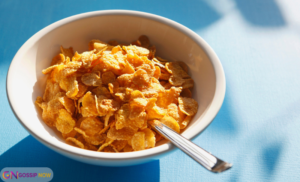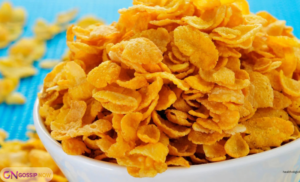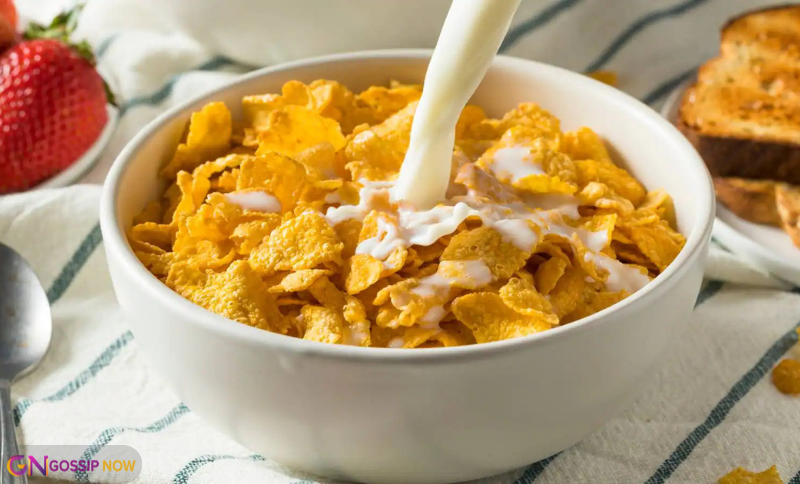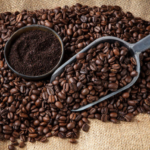When it comes to breakfast, few foods are as recognizable and widespread as corn_flakes. Whether you grew up eating them every morning or just reach for them occasionally, they’re likely a staple in your pantry. But have you ever stopped to wonder where corn flakes come from, what’s in them, and whether they’re a good choice for your diet?
Interestingly, corn_flakes are more than just a crunchy cereal. They have a history rooted in innovation, a list of surprising nutritional facts, and even a few unexpected uses in recipes. In this article, we’ll cover everything from corn flakes nutrition facts to whether corn_flakes are gluten free, plus helpful FAQs and a closing summary you won’t want to miss.
Let’s crunch into the details — and yes, you’ll see the keyword corn_flakes more than a few times (naturally!).
The Origins of Corn Flakes

To begin with, corn_flakes were invented in the late 19th century by John Harvey Kellogg, a doctor who was looking for a healthy, plant-based food for his patients. What started as a solution for digestive health soon became one of the most popular breakfast foods around the world. Today, Kellogg’s Corn Flakes remains the top-selling brand globally.
Over the years, many companies have followed suit, offering variations with added flavors, vitamins, and even sugar. Nevertheless, the classic original still holds a nostalgic place in many households.
Corn Flakes Ingredients: What’s Really Inside?
When picking up a box of corn_flakes, you might be curious about what exactly goes into making that crispy bite. Here’s what you’ll usually find in a typical serving:
-
Milled corn
-
Sugar
-
Malt flavoring
-
Salt
-
Barley malt extract
-
Added vitamins and minerals (like iron, B12, and folic acid)
Therefore, while corn_flakes seem simple, they are fortified with essential nutrients — especially in the case of Kellogg’s Corn_Flakes, which are often enriched with added vitamins.
Corn Flakes Nutrition Facts
It’s essential to know what you’re putting into your body, especially if you’re eating corn_flakes regularly. Here’s a quick breakdown of the average corn_flakes nutrition per one-cup serving (about 28g), without milk:
| Nutrient | Amount |
|---|---|
| Calories | 100–110 |
| Total Fat | 0g |
| Sodium | 200–250mg |
| Carbohydrates | 24g |
| Sugars | 2–3g |
| Protein | 2g |
| Iron | ~45% DV |
| Vitamin B12 | ~25% DV |
| Folate | ~20% DV |
As you can see, corn_flakes nutrition facts show they are low in fat and sugar, yet rich in iron and B vitamins. That makes them a solid choice if you want a light, nutritious breakfast — just be cautious about the added sugar in flavored versions.
Are Corn Flakes Gluten Free?
If you’re following a gluten-free lifestyle, you might be asking: Are corn_flakes gluten free? The answer is — it depends.
Though corn_flakes are made from corn, which is naturally gluten-free, many versions (especially Kellogg’s Corn_Flakes) include malt flavoring derived from barley. Unfortunately, barley contains gluten.
So, unless the packaging specifically says gluten free corn_flakes, they’re likely not safe for people with celiac disease or gluten sensitivity. Luckily, many brands now offer certified gluten free corn_flakes, made without barley malt or other gluten-containing ingredients.
How to Enjoy Corn Flakes (Beyond Breakfast)
Surprisingly, corn_flakes aren’t just for eating with milk. In fact, they’ve become a popular ingredient in both sweet and savory recipes. Here are a few creative ways people are using them:
1. Breading for Chicken or Fish
Instead of breadcrumbs, crush corn_flakes to add a crispy coating to baked or fried dishes.
2. No-Bake Desserts
Many old-school cookie recipes use corn_flakes for crunch — perfect for holidays or potlucks.
3. Casseroles and Funeral Potatoes
While many versions of funeral potatoes include a topping made of butter and corn_flakes, you can still make a tasty version without corn_flakes by using crushed crackers or fried onions instead.
Kellogg’s Corn Flakes vs. Other Brands
When comparing Kellogg’s Corn_Flakes with other brands, it’s important to consider:
-
Texture and crunch: Kellogg’s tends to hold up better in milk.
-
Nutrition: Other brands may have fewer additives or sugar.
-
Gluten-free options: Kellogg’s is not gluten-free unless labeled.
Always read the ingredient list, especially if you’re concerned about allergens or added sugars.
Are Corn Flakes a Healthy Choice?
You may be wondering whether corn_flakes are actually good for you. The answer lies in balance.
Pros:
-
Low in fat and cholesterol
-
Fortified with essential vitamins
-
Easy to digest
-
Quick to prepare
Cons:
-
Low in fiber and protein
-
Can be high in sugar depending on the version
-
Not always gluten free
So, while corn flakes nutrition has its benefits, it’s best to pair them with fruit, nuts, or protein-rich foods like Greek yogurt for a more balanced meal.
Popular Myths About Corn Flakes
 Because corn _lakes have been around for so long, they’ve also gained a few myths. Let’s clear up some common ones:
Because corn _lakes have been around for so long, they’ve also gained a few myths. Let’s clear up some common ones:
-
“Corn flakes are high in sugar” — Not always. Original versions are relatively low in sugar.
-
“Corn flakes were invented to reduce libido” — Yes, this is an actual myth, based on a misinterpreted aspect of Dr. Kellogg’s life. However, there’s no factual link between corn_flakes and this rumor.
-
“They offer no nutrition” — On the contrary, many versions are fortified and offer a decent nutrient boost when combined with other foods.
Tips for Buying the Best Corn Flakes
If you’re shopping for corn_flakes, consider these tips:
-
Look for whole-grain versions if you want more fiber.
-
Avoid flavored options if you’re cutting sugar.
-
Choose gluten-free corn flakes if you’re gluten intolerant.
-
Check the expiration date to ensure freshness and crunch.
Author Bio Table
| Name | Kevin Graham |
|---|---|
| Profession | Food & Nutrition Writer |
| Specialty | Whole foods, gluten-free diets |
| Education | B.S. in Nutrition Science |
| Published In | Healthline, Verywell Fit, Medium |
| Favorite Cereal | Corn Flakes (with bananas) |
| @keving_eats | |
| Location | Portland, Oregon |
| Experience | 8+ years in health journalism |
| Focus Areas | Breakfast foods, dietary wellness |
Conclusion
In the world of cereals, corn_flakes are a true original — simple, versatile, and surprisingly nutritious when paired with the right foods. While they may not be a complete meal on their own, they offer a fantastic foundation for a healthy breakfast or creative recipe.
From learning about corn_flakes nutrition facts to exploring whether corn_flakes are gluten free, you now have all the information you need to make smarter decisions at the grocery store. So go ahead, pour yourself a bowl — or crush some up for a casserole topping — and enjoy one of the most iconic breakfast foods ever made.
FAQs
Are corn flakes gluten free?
Not always. Most standard versions contain barley malt. Look for certified gluten-free options.
What are the ingredients in corn flakes?
Common ingredients include milled corn, sugar, salt, malt flavoring, and added vitamins.
Are corn flakes healthy to eat daily?
Yes, if eaten in moderation and paired with fruits, nuts, or protein to balance nutrition.
What can I use instead of corn flakes in recipes?
You can substitute crushed crackers, panko breadcrumbs, or fried onions depending on the recipe.
Is Kellogg’s Corn Flakes gluten free?
No, unless specifically labeled gluten-free due to the use of barley malt.






